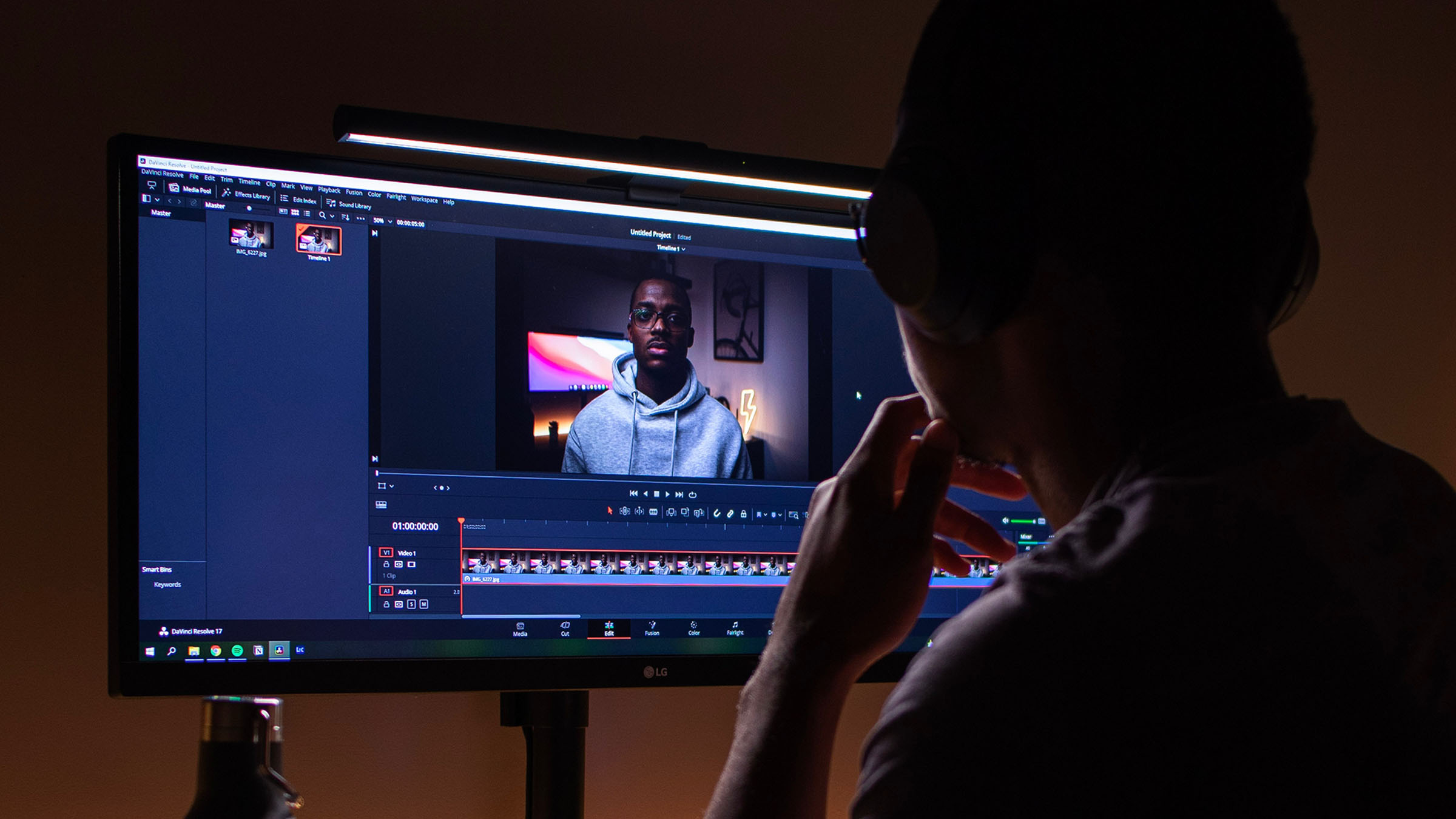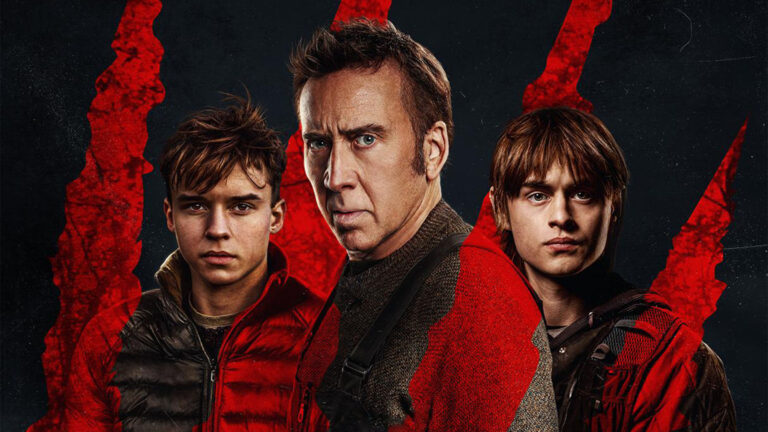As editors, what can we learn from studying the craft of performance and how can this new perspective improve our editing, regardless of the kinds of projects we cut?
“Editing is a beautiful alchemical craft. But it has a dark side: editing is a lie detector. It detects acting lies, directing lies, dialogue lies and cinematography lies. But the biggest lie it detects is the flaw in the story.”
—Greg Loftin, Writing for The Cut
Viewing your craft from the perspective of another part of the filmmaking art form can be a revelatory experience. Alternative perspectives can help you experience and understand things that you’ve previously overlooked. And these new skills can deepen your mastery of the creative work you do every day.
In this article, we’ll be taking a look at how the art and craft of film editing can be better informed by the art of performance. (When you’re finished, you might want to take a look at our article on Editing vs. Screenwriting.)
Contents
Editing vs. performance
Director Ron Howard suggests that everyone take acting lessons—even if they have no interest in pursuing it professionally—as it will give them a real-world grounding in what it is like to “be vulnerable, to be out there and be a part of telling the story and communicating it directly to the audience.” It’ll certainly open you up to the emotional undercurrents of what’s happening on screen or onstage.
As author and lecturer Greg Loftin points out in the opening quote, editing is a lie detector. And part of the role of the editor is to apply that lie detection, or truth selection, to the performances on screen.
I use the word performance, rather than acting, to make this more applicable to a wider range of editorial projects beyond scripted drama. For example, a CEO delivering a quarterly financials update for a corporate video is as much of a performance as an actor delivering a line of dialogue.
Being able to judge, evaluate and editorially improve that performance is all part of the editor’s job, whether you’re cutting corporate videos or feature films.
No more pretending to be dinosaurs
Suggesting that editors should take acting lessons isn’t crazy. You’ll already find it in animation, where the animators will often record themselves delivering a performance as a reference for their own animated shot—even if they’re pretending to be a dancing tea cup.
A funny and perilous example of this process comes from the earliest days of visual effects and ILM’s work on the original Jurassic Park, as told in episode six of Disney’s documentary series on the history of ILM.
This was the first film to foreground realistic CG creature animation, and the burgeoning computer graphics department had to figure out how to make these animals move in a natural way. So they took movement classes, learning how to move as dinosaurs might and then videotaped themselves running around the car park as reference.
Until that is, one of them tripped and fell, breaking his arm and rendering him unable to work. After this, they were all told “No more pretending to be dinosaurs.”
Should editors visit the set?
When it comes to editors learning from acting, there probably isn’t a place for the editor to directly give feedback to the actors about their performance, as this excerpt from Star Wars editor Paul Hirsch’s A Long Time Ago in a Cutting Room Far Away illustrates.
While walking on the set of a Brian De Palma film, Paul got chatting the with film’s star, who asked him how the dailies were:
“I said they were fine. “When I tighten up some of those pauses, it’ll be perfect.” I thought I had reassured her. The next day Brian came looking for me and was not happy.
“What the hell did you say to my star?” he demanded.
“What do you mean?” I told him what I had said to her.
“I was up half the night trying to talk her down,” he said. “Don’t ever say anything to the actors! You don’t understand. They can’t handle the slightest hint of a problem. You have got to say everything is wonderful.”
I have never forgotten that.”
—Paul Hirsch, A Long Time Ago in a Cutting Room Far Away
That said, the editor should definitely give feedback to a director if they don’t believe that the dailies are delivering the performances that the film requires. Or, because films are shot out of sequential order, if there are potential problems with the arc of a performance across the whole story.
For example, if a character is supposed to be gradually changing over the course of the film but there are some gigantic leaps in a particular dynamic in the performances captured on the day, these might need to be addressed during production by reshooting certain scenes. But it might not come to that.
With luck (and a good director) the actors will have delivered a range of performances allowing you and the director to try and build-in the right selections for the right moment. So being able to understand and interpret the fine points of a performance and how it fits into the arc matters.
If the set has been struck and the production budget has been spent, it might be up to you, the editor, to assemble a carefully tuned performance out of the pieces that you have. It’s in these moments that you’ll earn that chair (and probably your next gig).
Make everybody look good
In this older episode of The Guy Edits, editor Sven Pape shares nine practical tips for shaping an actor’s performance in the edit, with the whole goal of ‘making everybody look good.’
To me, ensuring that everyone looks their best is one of the true powers of film editing. It’s something that should be wielded truthfully (especially in documentary) and respectfully in dramatic film and TV.
As Sven points out, some of the main ways you can massage a performance is to remove any weaknesses, cut around a bad performance by using listening reactions, take out extraneous lines of dialogue and generally rework the footage as best you can to make the performance as believable as possible.
For a further practical example, and to return to editor Paul Hirsch’s distaste for too many pauses, these too can often be nipped and tucked to deliver a tighter performance.
“Pauses are a particular concern. Because films are shot out of sequence, actors may inadvertently pause too frequently.
I am careful to ration the pauses so that the overall pace doesn’t suffer.
Pauses are like salt; they must be used in moderation.“
—Paul Hirsch, A Long Time Ago in a Cutting Room Far Away
Technical performance enhancement
When it comes to perfecting performances, there are also technical tricks that an editor can use to squeeze every last drop of perfection from the footage, like the “Fincher Composite.”
I’m sure everyone else does these too, but one filmmaker who uses them all the time is director David Fincher, so to my mind this technique belongs to him.
The idea is to slice a shot into multiple fragments, isolating each character’s performance and then re-time the different sections independently of each other to create the desired effect. You can find it (though you should never notice it) in Mank.
For an exacting filmmaker like Fincher, running subtle speed ramps on a section of a take to condense the timing between lines or to combine the best performance from each actor, from different takes, into one shot is a regular occurence.
In the featurette above, Mank editor Kirk Baxtor demonstrates this technique and explains why he used a split-screen to speed up Rita’s listening section between two of her lines so that her response to Mank (her second line) comes in much faster and keeps the whole argument moving “at a very sharp clip,” rather than having to keep the pace up by “cutting back and forth each time someone says something.”
For a further example from Mank, watch this video with First Assistant Editor Ben Insler for a 3-way composite.
Retiming within a shot
Another trick is to simply cut out the middle section of a take and then stitch together the join with a seamless edit. Effects like Adobe’s Morph Cut or Avid’s Fluid Morph can sometimes be very effective in joining the two sections.
These typically work best with relatively static talking heads, but in my experience you usually have to get lucky with whatever happens to be occurring on screen at your edit point. But it’s always worth a try!
Word stuffing
Another technique to be aware of is “stuffing words” into the mouths of your speakers to combine the best delivery of a line with the best shot of that line. Basically, you’re taking audio from one take and matching it to another.
The Elastic Wave Retiming effect in DaVinci Resolve’s Fairlight page helps you to do this, in their words, by “dynamically retiming audio, squishing and stretching different parts of a waveform to subtly retime audio playback for a variety of reasons, all while maintaining constant pitch.”
This effect makes it much easier to achieve believable results than carefully editing each syllable or trying to pitch shift them section by section to fit into the mouth of your speaker.
Performance lives in sound
While we are on the subject of audio and performance, it’s worth highlighting the critical and far more flexible nature of making sonic adjustments than visual ones to improve the final performance.
According to Curb Your Enthusiasm and VEEP editor Roger Nygard, far more of the performance lives in the sound than in the visuals. It is so important in fact, that Roger devotes a whole chapter to it in his excellent book Cut to the Monkey.
“Chapter 8 – Sound Is King: Comedy Lives in the Soundtrack
A whole chapter dedicated to sound? What madness is this?
What if I told you sound is the most important part of editing, especially for comedy?
Film may be a visual medium, but comedy is in the performance, and performance lives in the sound.”
–Roger Nygard, Cut to the Monkey
One of the techniques that Roger relies on heavily during the editing of entirely improvised shows like Curb Your Enthusiasm, is to mask existing lines of dialogue, or to insert additional lines recorded after the shoot (ADR), onto the shot of the back of the speaker’s head, so that we can’t see their lips moving.
This allows Roger to truncate monologues, clarify the set up to specific jokes and generally wrangle the footage into a coherent scene.
ADR is your friend
As we discussed at length in Editing vs Screenwriting, editors should be competent at rewriting their projects to deliver the best result possible. This includes suggesting additional lines of dialogue or changing the nature of a soundbite to add clarity (or ambiguity) to keep the audience engaged – not letting them get too far ahead or fall too far behind.
Obviously this is easier, and presents more possibilities when central characters are seen wearing masks or otherwise obscuring their mouths by holding a phone to their face, or being seen from behind.
These kinds of shots can save your bacon if somehow you’ve painted yourself into a narrative corner.
Show, don’t tell
Another way in which an editor can shape a performance, also drawing in a lesson from screenwriting, is to show, don’t tell. That is, to show us what a character thinks/feels/believes/decides through seeing their actions, rather than having someone tell us directly.
In this excellent video essay from Lessons from the Screenplay which compares active vs. passive protagonists in Star Wars: The Force Awakens and Rogue One, Michael Tucker quotes from screenwriting guru Syd Field’s book Screenplay: The Foundations of Screenwriting:
“Action is character; a person is what he does, not what he says…
Because we’re telling a story in pictures, we must show how the character acts and reacts to the incidents and events that he/she confronts and overcomes (or doesn’t overcome) during the storyline.”
—Michael Tucker, Lessons from the Screenplay
This is an important performance consideration for your edit, because the way in which a decision is made, presented or changed through the edit, can dramatically alter the way in which we perceive the character.
For example, whether Han Solo shoots first or in self defense can define your feelings for the character based on which side of the line you come down on.
Equally, in documentary editing the way in which you show and don’t tell also transforms the audience’s perception of a character. If you hold on their face for a beat longer than normal after they finish talking, the audience will naturally begin to question the veracity of what they’ve just said. This manipulation is at the heart of editing, but it is to be wielded with due care and consideration.
Either way, ask yourself what will happen to the characters, story and strength of the performances in your project if you can show more and say less?
If you watch the video from This Guy Edits in the section above, in which he shapes some raw rushes into a final scene, this principle of showing more and telling less, definitely holds up!
Questions actors ask that editors should, too
There are certain questions that an actor will ask of their character when considering how to perform in a scene. These same questions will serve an editor well to ask of each character in a scene, but also the whole scene itself.
The two most common questions are; what does my character want and why do they want it? This goes back to the importance of understanding Intention and Obstacle, as we discussed in Editing Vs Screenwriting.
Other important questions might be where has the character just come from and where are they going to next?
Top Gun: Maverick and Mission:Impossible editor Eddie Hamilton shared a similar set of questions in the interview below. When editing a scene, he likes to ask himself…
- What is the scene about emotionally?
- Am I only delivering information, or is my focus on emotion, character, and relationships?
- Whose point of view is the scene from?
- How can we put pressure on the lead protagonist?
- Are we giving characters an entrance the first time we meet them?
- How does the character feel at the start and end, where is the change?
Answering these questions will give you a lot more information on how best to shape the scene and the performances to best align with these underlying story truths.
Aaaand scene
Hopefully this brief foray into the world of performance has given you a fistful of tools to improve your next edit with, as well as some solid storytelling principles to apply too.
And I hope that whatever your role in the world of film and video production may be, you’ve gained a greater understanding of the storytelling process through the viewpoint of another department, which enriches your chosen craft.




